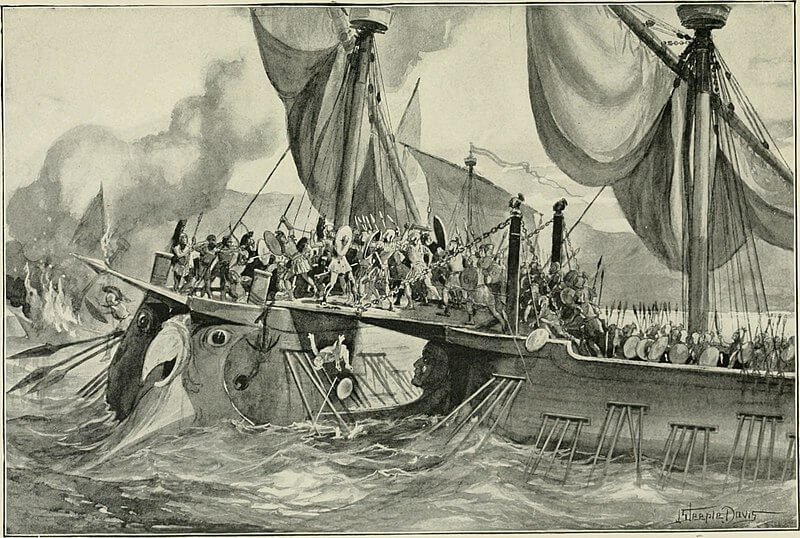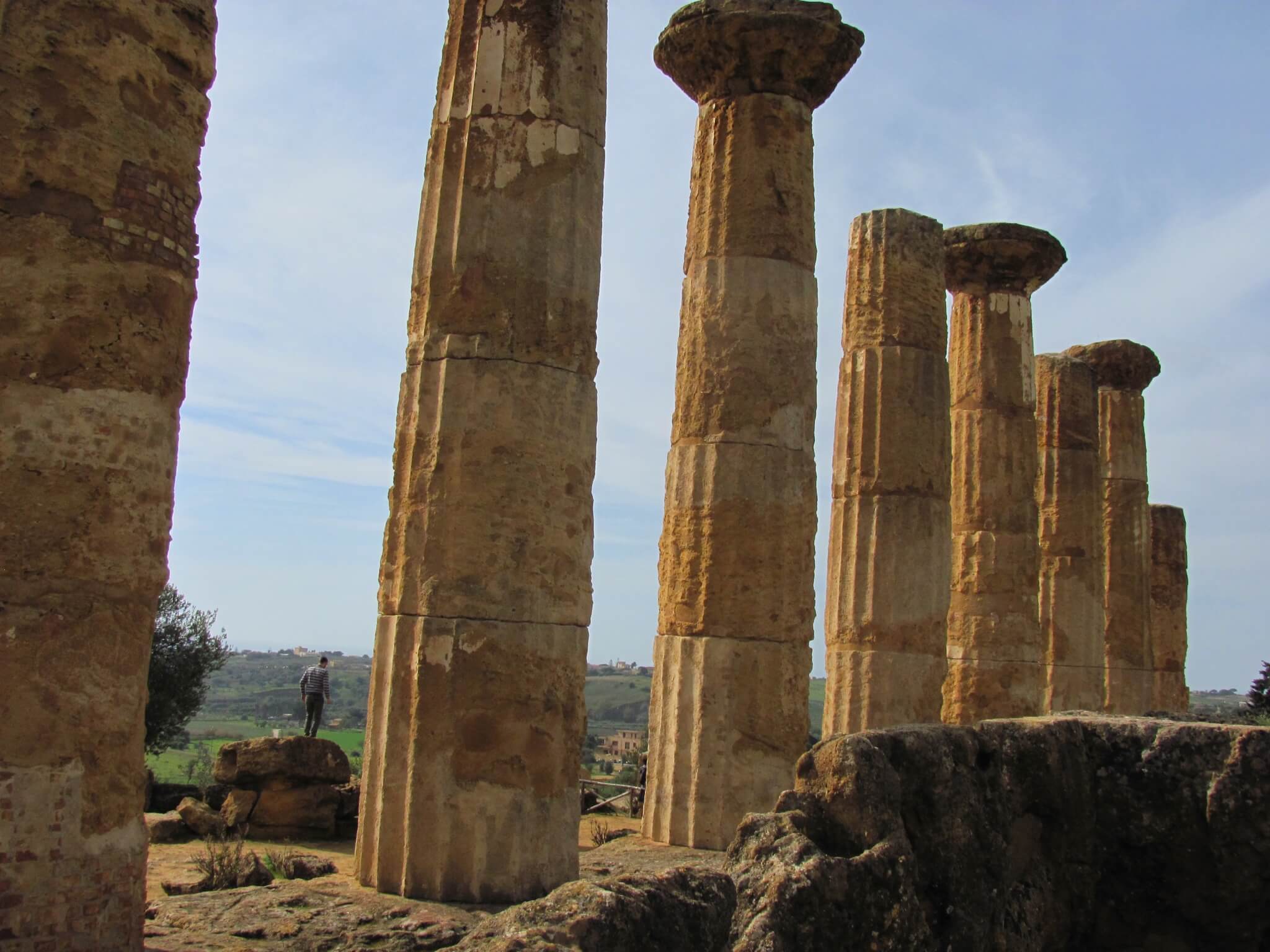- Home
- Sicilian Culture
Sicilian Culture: A Journey Through History, Art, and Cuisine
Sicilian culture is a vibrant mix of influences from across the Mediterranean. Everyone can sense this when walking through the labyrinthine streets of its historical centers, in the noisy markets filled with fresh products, or sipping a drink amidst the never-stopping theatre of Sicilian life.
The island's central location has made it a center of power struggles and trade, through which European, Middle Eastern, and North African cultures have passed.
Different people have intermingled here through marriages, trade relations, and architectural cooperation. An example of the latter is the legacy of the Arab-Norman churches in Palermo.

When Norman rulers commissioned Arab craftsmen to build Christian churches, they created the unique Arab-Norman style visible in places like Palermo's Palatine Chapel, where Islamic geometric patterns frame Christian mosaics.
Similarly, Italians and Greeks have influenced the island's cuisine and language. Despite this cultural diversity, every town and village has its own culinary and other traditions.
There's no point asking Sicilians where the best cheeses or pastries are made. The answer is always the same: wherever that person happens to be from.
Sicilian culture is thus a combination of multiculturalism and a strong local heritage.
The History of Sicily: From Ancient Times to the Present Day
Sicily has a history spanning thousands of years. The island has been inhabited since prehistoric times. But it wasn't until the Greeks arrived that it became an important cultural, political, and commercial center.
For the Sicilians, the arrival of Greek civilization meant also the arrival of literary culture and new sophisticated skills in food and winemaking.
This prosperity and cultural flowering period ended in 241 BC, when the Romans conquered the island. The Roman Empire was the superpower of its time. They were renowned for their military prowess.
For the Romans, Sicily was important as a strategic destination and a granary. They made the most of the place but didn't appreciate its inhabitants much.
For the Sicilians, the arrival of the Romans meant slavery-like conditions. Just as it did for the tens of thousands of enslaved people Rome brought to the island to plow the fields.

The most far-reaching thing the Romans brought was Christianity, which still significantly impacts Sicilians' lives today.
Christianity was also the last thing the Romans brought. Soon, their empire collapsed. For a while, the Byzantines took their place as rulers of Sicily. Under their rule, it was virtually abandoned.
Things only changed for the better when the North African Arabs seized power. They organized the island's administration so well that the Normans who came after them did not see the need to change it in any way.
The Arab influence is still visible today in the Sicilian language and, above all, in the many crops for which it is famous: citrus fruits, pistachios, eggplants... The Arabs also brought sugar cane and the tradition of sweet pastries with them.
Arab agricultural innovations didn't just add new crops—they transformed the landscape into the terraced hillsides and irrigation systems that still define rural Sicily today.
When the various Arab emirates started fighting each other, the Normans took the opportunity.
The Normans' goodness was shown above all because they did not forcefully try to change anything. In the Middle Ages, Muslim civilization was light years ahead of Christian Europe, so the Normans picked up where the Arab rulers had left off.
The Norman Empire did much good. Under their rule, in the early 1000s, different cultures worked together, and many of the island's finest attractions were created.
These Arab-Norman wonders of the Palermo area still amaze travelers today. They are especially evident in the many churches, such as Monreale Cathedral, Palatine Chapel, and Martorana.
 Marveling at the Palatine Chapel, in Palermo, inside the Norman Palace.
Marveling at the Palatine Chapel, in Palermo, inside the Norman Palace.After a couple of hundred years, power passed to the Spanish court, which meant the end of interreligious coexistence. In Spain, the Catholic faith was dominant, and it used the Inquisition to stamp out other religions.
After that, Sicily remained in obscurity for hundreds of years. The nobility ruled the island however they could. The actual rulers rarely showed their faces.
To make matters worse, the newly discovered sea routes to America made the Mediterranean region seem like a backwater in the big scheme of things.
In 1860, the following significant changes occurred: Adventurer Giuseppe Garibaldi united Italy, and Sicily was incorporated into the new Italian state.
The beginning of a new era was not easy for the Sicilians. It was marked by economic hardship, poverty, and organized crime.
 Giuseppe Garibaldi, in his older days.
Giuseppe Garibaldi, in his older days.Significant social and political reforms occurred at the end of the 20th century. Today, Sicily is an autonomous region of Italy.
All this overflowing historical tapestry is also visible in the island's distinctive artistic heritage.
The Art of Sicily: From Greek Temples to Modern Times
Greek influences arrived in Sicily in the 5th and 4th centuries BC. This still shows particularly in the former Greek parts of the island, like Syracuse and Agrigento.
The Valley of the Temples in Agrigento is an exceptionally well-preserved example. It was built in the Doric style, which is characteristic of this period.
 Inside the Valley of the Temples.
Inside the Valley of the Temples.The most spectacular example of the Roman Empire, then again, is near Piazza Armerina, in central Sicily. It is called Villa Romana del Casale.
It is a Roman villa with mosaics that are exceptionally well preserved.
Norman churches you can find in the Palermo area. They showcase Byzantine, Arab, and Norman craftsmanship. The cathedrals of Palermo and Monreale, and the Palatine Chapel are elegant examples of this intercultural collaboration.
The Renaissance mostly passed by Sicily. But it still left some impact on the art of its time.
Baroque, on the other hand, was very popular. The most striking examples are the towns of Noto, Ragusa, and Modica, which were all rebuilt in the Baroque style after the great earthquake of 1693.
 Balcony decorations in Noto.
Balcony decorations in Noto.With the advent of the modern era, realism became a fad. Sicilian art also began to show its influence. At that time, social and political problems were very much on artists' radars.
Giovanni Verga's short stories are the best-known examples of Sicilian realism. One of them, Cavalleria Rusticana, is also a famous opera.
The Sicilian contemporary art scene is very active today. New artists use a wide range of media, reflecting the island's long history and present.
The Cuisine of Sicily: A Fusion of Flavors and Traditions
In Sicilian food, history is hidden in the family recipes passed down through generations.
Sicilian cuisine uses the raw materials that have traditionally been available on the island. These include a variety of seafood and a wide range of fruits and vegetables.
Thanks to its many influences, Sicilian food is overflowing with flavors and aromas.
In addition to Italian influences, North African flavors are widely represented. This Arab influence explains why Sicilian cuisine feels more exotic than mainland Italian food.
However, traditions vary from one part of the island to another. The Arab influence is strong in the West, as the eastern parts of the island are more influenced by the Greeks.
One of the most famous Sicilian delicacies is arancino. These deep-fried rice balls traditionally contain meat sauce, mozzarella, and peas.
Another well-known Sicilian dish is Pasta alla Norma. It is named after Bellini's opera. Meaning it is "a real masterpiece."

In addition to the many crops, the Arab heritage includes a variety of sweet delicacies. The most famous of these are cannoli and cassata.
All in all, Sicilian food is a testament to the island's long cultural exchange and fertile soil.
Sicilian Festivals and Celebrations: A Year-Round Calendar of Events
In Sicily, it seems that every town and village has its own festival.
The festival of Saint Agatha in Catania celebrates the city's patron saint.
The festival of Santa Rosalia in Palermo, then again, celebrates their patron saint.
There are also many food-related festivals, like the pistachio festival in Bronte, the chocolate festival in Modica, the mushroom festival in Castelbuono, and many more.
Then there are the film festivals. The most famous of these is in Taormina. It attracts famous people from all over the world.
Syracuse also has its own famous film festival.

The arrival of spring is celebrated most spectacularly in Agrigento. The Almond Blossom Festival takes place when... That's right: when the almond trees bloom.
Only December is quieter on the festival front. That's because it's spent on preparation for Christmas.
In addition to Christmas, Easter is another island-wide celebration. Third is Ferragosto, which is in mid-August. These three are big feasts all around Italy.
 Festival of Saint Agatha in Catania.
Festival of Saint Agatha in Catania.Sicilian Culture: Conclusion
Sicilian culture is intertwined with the island's history. Many conquerors have left their mark on the island's art, food, and festivities.
Local traditions run parallel to the broad historical arcs. Each locality has its own experience of the great turning points in the flow of time. And so there are many different traditions, making this island a patchwork of local cultures.
Today's Sicilian culture is a mixture of tradition and new aesthetics. Traditional dishes are being adapted to modern cuisine. In art, tradition meets modernity.
Sicily's unique position as the Mediterranean crossroads has always created not just a mixture of cultures but true cultural innovation.
 Santa Rosalia
Santa Rosalia(Last updated: June 11, 2025.)
Recent Articles
-
Best Time to Visit Sicily: Your Seasonal Guide
Dec 05, 25 04:23 AM
Find the best time to visit Sicily. Explore seasonal weather, crowds, prices, and highlights. -
Where to Stay in Sicily: Top Areas for Every Traveler
Nov 27, 25 08:14 AM
Where to stay in Sicily: A guide to the island’s best regions, helping you choose the perfect base for your trip. -
Cefalu Beaches: Where Sun, Sand, and Calm Await
Nov 26, 25 12:10 PM
Discover Cefalu beaches where warm sands, clear waters, and coastal charm come together.
Follow MANY FACES OF SICILY on Facebook, Instagram, Bluesky & Tumblr
Contact: vesa@manyfacesofsicily.com







